|
DETERMINE
THE DISTANCE TO NGC 7331
-
In this exercise you
will be given information on a number of Cepheid variables
in the galaxy NGC 7331 in the constellation Pegasus. It is a
Barred Spiral galaxy with approximate dimensions 10.7' *
4.0' and an apparent magnitude of 9.51 which makes it
visible in moderate sized telescopes.
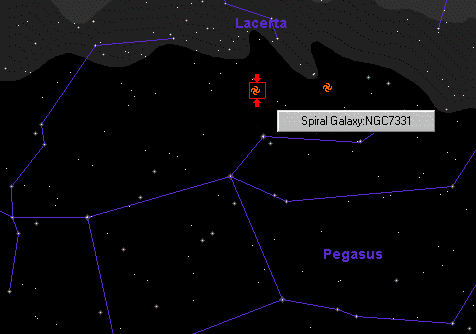
All the pictures and light
curves given here are from the Hubble Space Telescope Extra
galactic Distance Scale project published in
1998.
The steps we will be using
are:-
- Locate Cepheid
variables.
- Determine their Apparent
magnitude.
- Obtain their Periods (actually
this is done for you).
- Use the Period-Luminosity law to
find the Absolute magnitude.
- Calculate the distance to the
Cepheid variable using the distance modulus.
- Take an average to find the
distance to the galaxy.
You will use the distance
modulus:-

Also in this exercise you take the
interstellar extinction into account and by experimenting
with it you will find out why it is very important for
astronomers to know how much dust and gas there is between
us and the galaxies they observe.
But
how do the astronomers find a few Cepheids out of millions
of stars?
Well they know that the brightness of
these stars vary over a period of up to 50 days, so they
take a number of photographs of the galaxy and search for
stars that have different magnitudes on each photo. Some of
these photographs are shown below from the galaxy M100 and
when played as an animation, it can be seen that they are
variable stars.
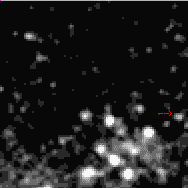
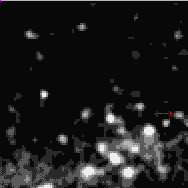
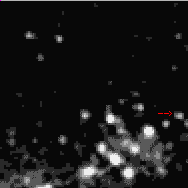
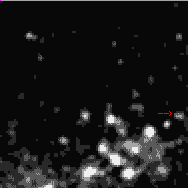
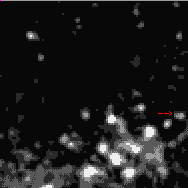
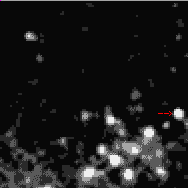
And when these are animated you see
this:-
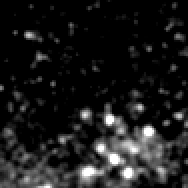
|
Not all the sources that
change brightness in these animations are Cepheids.
Some objects are other variable stars, some seem to
change because of various factors. Here is a list
of what could cause these changes.
- Image shifting - Due to
inaccuracies in the telescope pointing
system.
- Other variable stars -
Variable stars are quite common in the
Universe.
- Cosmic rays - Sometimes
these can hit the CCD chip to give the
impression of a bright light source.
- Asteroids - These can be
caught on the image and be gone by the time the
next image is taken.
- Defective pixels - Some
of the pixels on the CCD may be oversensitive or
malfunctioning.
|
|
Here is the galaxy we will be
working with
NGC
7331
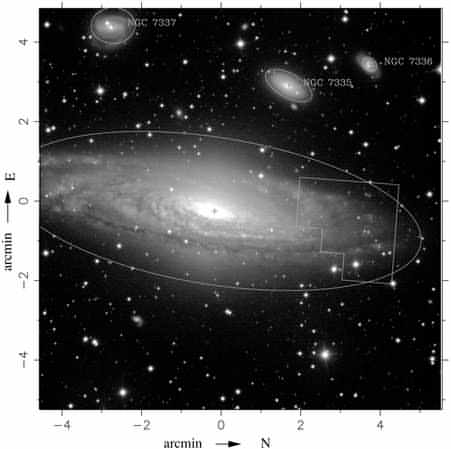
Here is an enlarged view of
the section on the western side of the galaxy NGC
7331
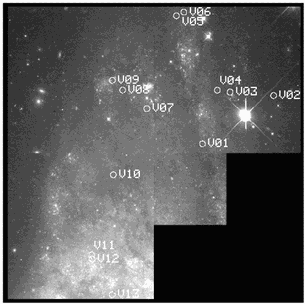
Each of the labeled circles are
Cepheid variable stars, if you click on them you will go to
another page where you will be given the light curve and
apparent magnitude for that particular star. Do this for
each one.
When you have found the apparent and
absolute magnitude for all 13 variable stars, click on the
link below to go on to the next part.
Click Here
To Go On To 'The Calculation Page'
|



![]()








